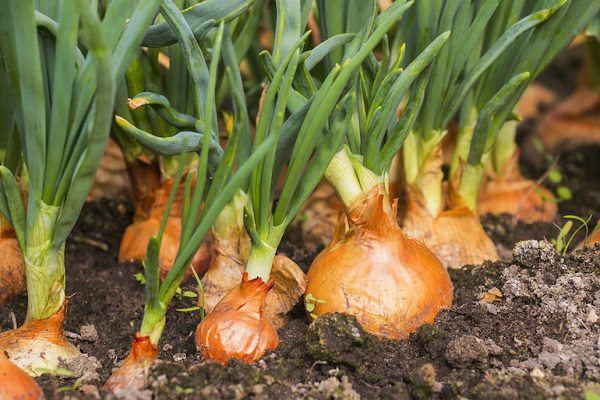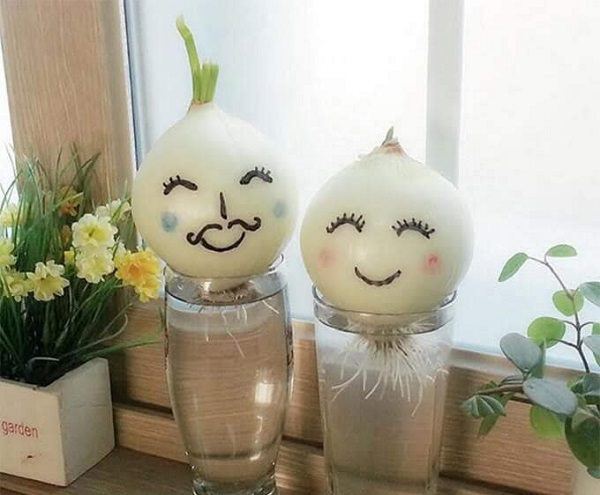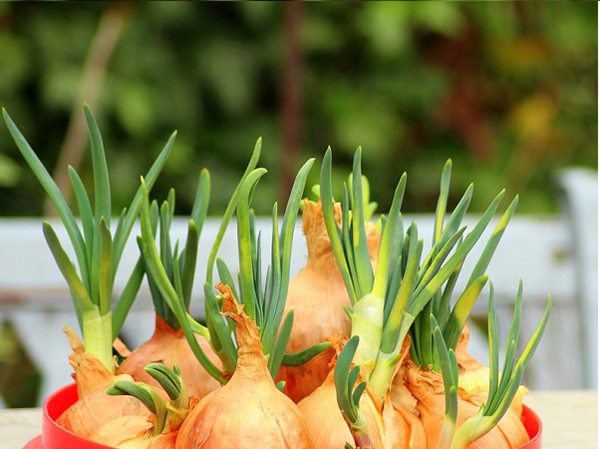Onion is a plant species native to South Asia, scientifically known as Allium cepa L, belonging to the onion family (Alliaceae) or Amaryllidaceae). It is a bulbous plant belonging to the monocotyledon class. Onions are a biennial or perennial herb, but they are grown as an annual crop.
According to ancient records, the nutritional value of onions has been known for a long time. They are rich in natural nutrients such as potassium, vitamin C, amino acids, etc. Onions are used in most daily cooking recipes.
1. How to grow onions
Due to the amazing health benefits for humans, onions are widely grown in our country. The plant has underdeveloped roots and low tolerance, so if you intend to grow onions at home, you need to spend time taking care of the plants. You can use items such as styrofoam boxes, pots, trays, or empty soil patches to grow the plants. The bottom of the plants should be perforated for water drainage.
2. Planting temperature for onions
Onions are cold-tolerant plants and can withstand high cold conditions. The optimum germination temperature for the plants is 18 degrees Celsius, however, the plants can still germinate at temperatures ranging from 7 to 29 degrees Celsius. During the vegetative stage, the preferred temperature range for the plants is from 23 to 27 degrees Celsius. The plants grow and develop slowly when the temperature exceeds 30 degrees Celsius.
Onions are sun-loving plants. During the formation and growth stage, they prefer a large temperature difference between day and night, with a day length of 12 to 15 hours of sunlight.

Onions are grown a lot in tropical and humid climates. The best time to plant onions is in the winter season (from August to November). The plants can also be planted in the offseason from March to April, but the yield will be lower.
Note: Currently, there is a trend of growing hydroponic onions in a cup of water for decoration at home or in the workplace. To grow hydroponic onions, you need to make sure the plants have a lot of sunlight and an average temperature of 22 – 28 degrees Celsius.
3. Choosing planting soil and planting techniques
Onions prefer to grow in loose soil such as light loam, sandy soil with good drainage. Do not plant onions in soils with a high clay content, such as heavy loam soil.
To ensure good plant growth, you can purchase ready-made soil or mix the soil with chicken manure, worm castings, rice husk, coconut fiber, organic compost… You can also add lime to the soil and leave it to dry for 7 to 10 days to treat any pathogens in the soil.
The pH level in the soil should be between 6 to 6.8 for optimal plant growth. If the pH level is higher, between 7.5 to 7.8, the plants can still grow normally. The plant roots will die if the pH level is below 6.

The onion seeds can be directly sown into the soil or soaked in warm water for faster germination before sowing. Scatter the seeds onto the soil and cover with a thin layer of soil. To ensure the soil is always moist and create optimal conditions for seed germination, water the plants once or twice a day. During the growth process, you need to prune the plants that do not meet the standards, have poor growth, or are affected by pests and diseases.
Notes on growing onions
Onions are usually not prone to pests and diseases. Common diseases include leaf blight, onion smudge, and root rot. You need to apply preventive measures and ensure proper watering for the plants. If you find any signs of disease on the plants, you should use specific treatments.
Place the plants in areas with plenty of sunlight.

Caring for onions
After planting for 10 days, you should apply organic fertilizers such as manure, cow manure, goat manure, etc. Then, after about 15 – 20 days, apply the next round of fertilization. Each time you fertilize, combine it with soil cultivation and weeding.
Onions prefer a moist environment and have poor tolerance to drought, so you need to regularly water the plants to ensure optimal growth.
Harvesting time
Onions grow quickly, so after about 4 weeks, you can harvest the onion leaves for cooking purposes. You can cut off all the leaves to allow new leaves to grow. After about 3 – 4 months of planting, you can harvest the onion bulbs.
According to thoidaiplus


































